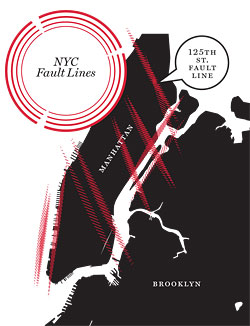
Earthquakes and cyclones (a.k.a. hurricanes) can also strike New York—and they have.
In 2001, two different magnitude-2 quakes—you didn’t feel them?—hit Manhattan. They occurred along the 125th Street fault line, which traces the street’s diagonal western section before continuing southeast into Central Park. The city’s last big quake, a magnitude 5, hit near Rockaway in 1884—which means we’re overdue, says seismologist Klaus Jacob of Columbia’s Lamont-Doherty Earth Observatory. Over the next 100 years, he says, there’s “a roughly 50 percent chance you will have a magnitude 5, and a roughly 95 percent to 100 percent chance that you will experience a magnitude 4.” A magnitude 5 would likely cause billions of dollars in damage and cost many lives, while even a magnitude 4 would be, Jacob says, “a heavy nuisance, if not more—and it would scare the hell out of people.”
We’re also well situated to get hit by a hurricane. “The New York Bight”—it’s a nautical term—“which is that area between the Jersey shore and Long Island, that almost right-angle corner—those kinds of places tend to trap water,” says Stephen Baig of the National Hurricane Center. A mere category-1 hurricane, he says, could flood the Battery with twelve feet of seawater; a perfectly plausible category 3 would double that. An 1821 hurricane inundated everything below Canal Street, and 1938’s “Long Island Express,” which made landfall in the Hamptons, generated 120-mph winds at the top of the Empire State Building.
Have good intel? Send tips to intel@nymag.com.